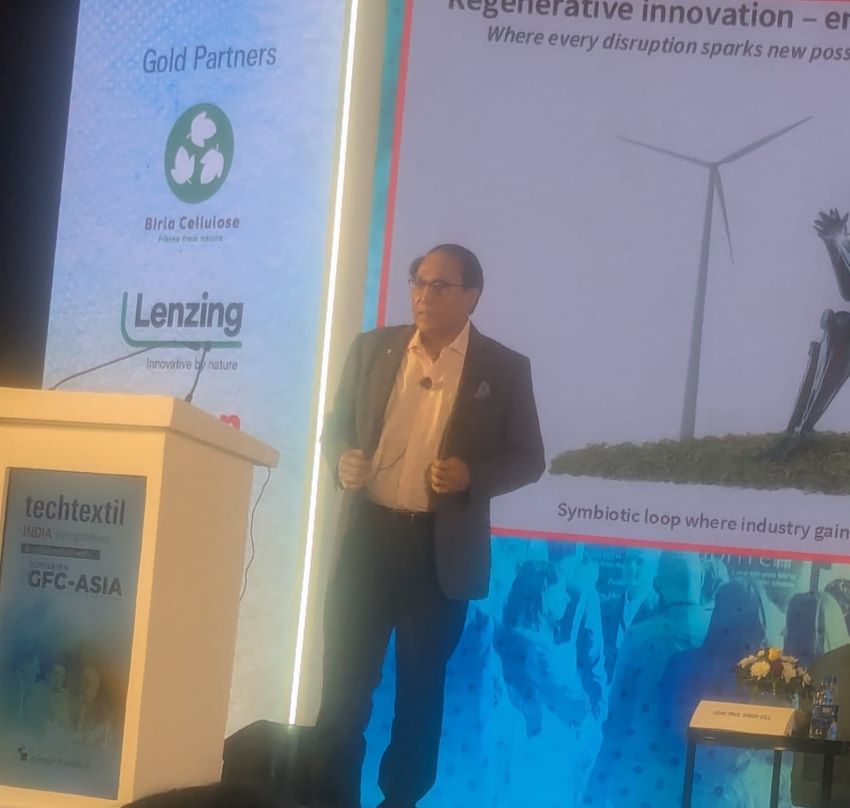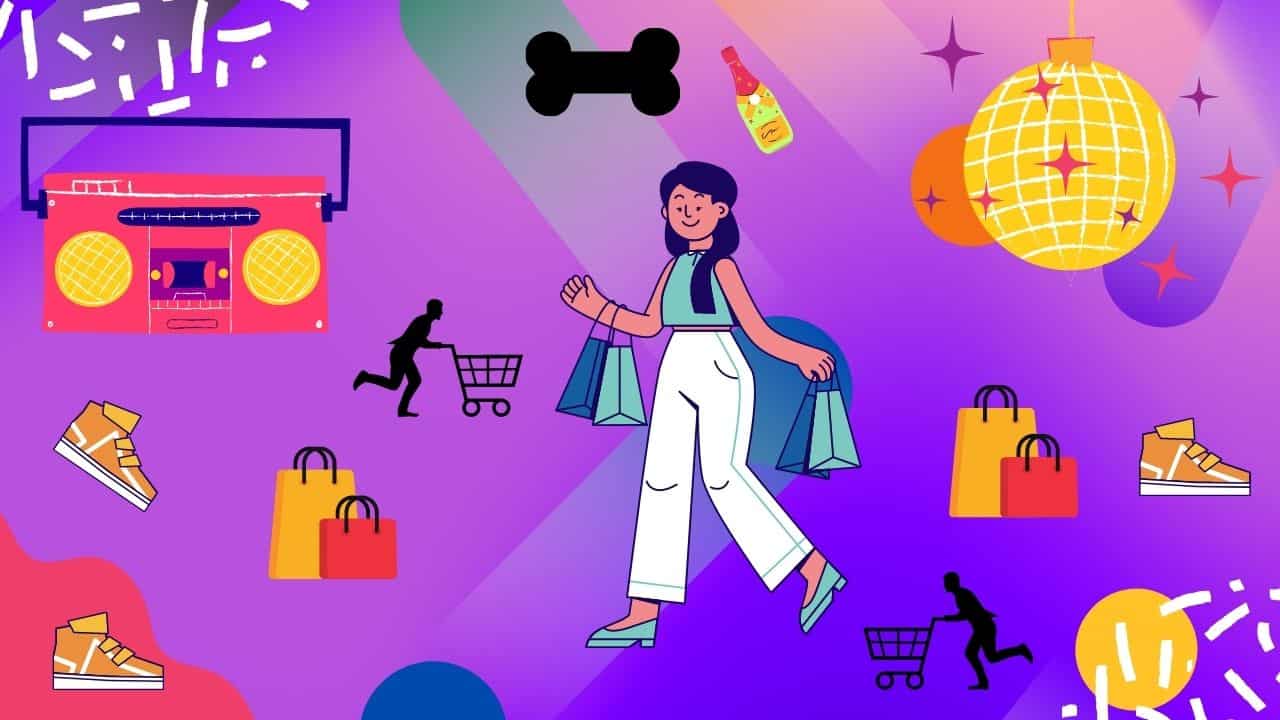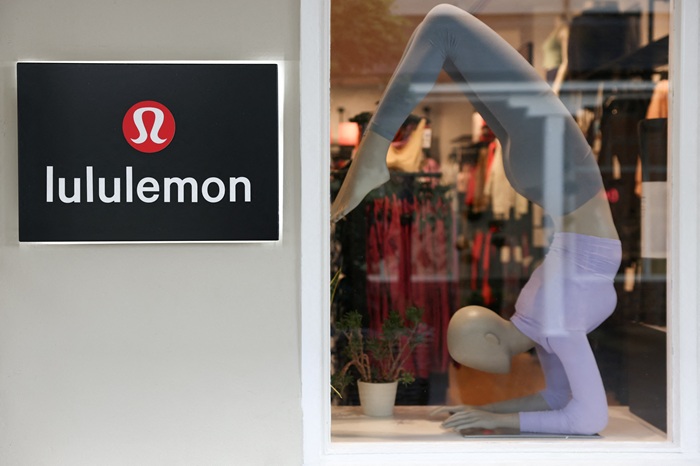FW
For its 25th anniversary, Turkish denim brand Mavi has joined forces with Italian fashion designer Adriano Goldschmied to create a denim collection titled ‘Indigo Move’ that would focus on comfort and an active lifestyle. The collection will launch in September this year and will include 24 women’s styles and 12 men’s styles in all shades of indigo.
The collection is made up of two fabrics: Move Denim, a knit-based fabrication with the appearance of indigo natural brush denim shadings but the performance of activewear; and Bi-stretch, a multi-directional stretch fabric that offers shape retention and elongation. The core piece for the women’s collection is a classic mid-rise super skinny jean. Other pieces include leggings, super high-rise skinnies, gauchos and mermaid flares. On the other hand, the men’s collection is centered around a slim leg fit and also offers joggers, track jackets, blazers and hooded pull-ups.
Goldschmied said, he was inspired by the word Mavi that meant blue in Turkish and the passion for the blue has been a fundamental pillar of the brand from the first time he teamed up with Mavi around 25 years ago. It is since then that the amazing Mavi team, powered by this passion, has created one of the leading global brands in the denim industry today.
The Indigo Move collection will sell between $98-$148 a piece and will be available online and in Mavi Brooklyn retail locations and with other international retailers.
"Indian the textile sector is one of the four most labour-intensive sectors of the economy, along with construction, agriculture and tourism sectors. It has a huge potential for generating sustainable jobs as well as export earnings. Currently, it employs about 35 million people and contributes 12 per cent of exports. But just 15 years ago, the share of textiles and clothing in India’s manufacturing exports was more than 25 per cent."
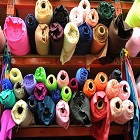
Indian the textile sector is one of the four most labour-intensive sectors of the economy, along with construction, agriculture and tourism sectors. It has a huge potential for generating sustainable jobs as well as export earnings. Currently, it employs about 35 million people and contributes 12 per cent of exports. But just 15 years ago, the share of textiles and clothing in India’s manufacturing exports was more than 25 per cent.
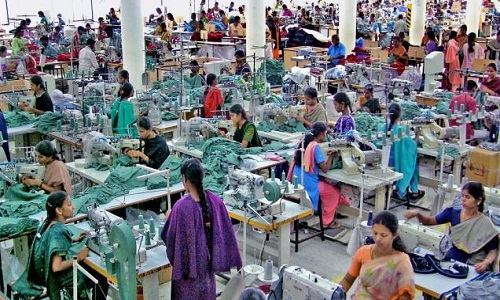
India’s garment exports have now been overtaken in dollar terms even by its neighbour Bangladesh, and Vietnam may not be far behind. Of course, Bangladesh has benefitted from duty-free access to the European Union, and indeed some Indian entrepreneurs too have located themselves in that country for that reason. But Bangladesh’s transformation of its garment sector within a decade is nothing short of and example, offering lessons for India. Meanwhile, India has a unique opportunity to reverse the decline in its export share and seize a global leadership position. Some of this opportunity is arising due to changing labour dynamics in China, which has been the world’s textiles behemoth.
Textiles, a huge opportunity for India
Chief Economic Advisor (CEA) Arvind Subramanian has been championing the cause of this sector with compelling data. He points out most of the sustained East Asian growth of past decades was on the back of the textile and clothing boom. Most tellingly, a unit of investment in the clothing sector generates 12 times as many jobs as the automobile sector and 30 times that of steel. Clearly, there is a big bang for the investment buck in textiles. Not surprisingly, the CEA’s passionate advocacy is showing results.
The recent reforms announced by the cabinet under a ‘textile package’ address some key impediments, and the package is timely. First, the reforms removed some of the embedded tax burden from exports through a duty drawback scheme. Secondly, firms are provided incentive to hire more workers through a subsidy to meet the EPF costs. But clearly much more needs to be done to harness the great promise. A CII-BCG study for textiles, made-ups and apparel estimates that the sector can generate 50 million jobs in the next nine years. Of these, more than 70 per cent will be for women. The study also shows that the shift of textiles and garments away from China is an annual opportunity of about 280 billion US dollars for other developing countries.
Advantage India
India has some advantages in being present in all parts of the value chain, beginning from fiber, yarn, fabric and going all the way to clothing, branded apparel and fashion. This is not to mention the new emerging markets like technical textiles that have industrial applications.
But here are two additional considerations that need close attention. First, is the issue of fiber neutrality. In India, there is a curious frenemy relationship between cotton and man-made (synthetic) fibers. The global consumption pattern is 65:35 in favour of synthetics (like polyester, rayon, acrylic), whereas in India it is exactly the reverse. The net imports of the US and EU show a steady decline in cotton textiles vis-à-vis manmade fiber products over the past five years.
If India needs to tap into the export opportunity to these developed nations, our domestic mix has to mimic the global demand pattern. In India, cotton makes up 80 per cent of all fiber consumption whereas in China it is 50 per cent. This skew has been made worse due to the highly unequal excise tax treatment of cotton versus the rest. The textile ministry is aware of this asymmetry, and a fiber-neutral policy is on the anvil. Hopefully, the GST regime will also discontinue the sharp asymmetry that has persisted for the past ten years.
Second, is the impact of free trade agreements. Fortuitously, the CEA himself is heading a committee to evaluate the costs and benefits of the several FTA that have been signed by India in the past couple of decades. Prima facie it appears that India’s trade deficit has uniformly gotten worse following several FTAs. No doubt, there has been trade enlargement, but not necessarily to India’s benefit. The reasons could be many – some fair, some unfair.
There is also the looming shadow of the mega treaty called the Trans Pacific Partnership which goes much beyond trade, and makes it compulsory for the entire value chain to be located in member countries. India is not a member of TPP and can potentially be at a serious disadvantage. Fortunately, the TPP is losing political support, so it may be several years into the future. Finally, despite these various hurdles, let us not lose sight of the huge promise of this sector (it is after all one of the trinity of roti, kapada, makaan), in generating large-scale jobs, especially for women, and healthy foreign exchange earnings. With proper policies and reforms, the textile sector in India is definitely heading for a high noon of great fortune.
The Indonesian Embassy in Dakar recently organized a business meeting with Senegalese businessmen to promote various products and strategic industries of Indonesia as well as the Trade Expo Indonesia (TEI) to be held in Jakarta from October 12 to 16 this year. Speaking on the occasion, the Indonesian Ambassador in Dakar, Mansyur Pangeran said that the bilateral relations between the two countries were still considered very low at only about $89,37 million in 2015.
In his presentation about the current state of Indonesian economy, the ambassador also promoted a variety of superior products and strategic industries of his country. Trade ties between Senegal and Indonesia has been growing rapidly in exports related to products such as palm oil, cocoa, rubber, cinnamon and textiles. The business meeting was attended by businessmen of Senegal who have been doing business with Indonesia earlier. In addition, the business meeting was also attended by businessmen of the Thies Senegal region.
At the end of it all, what emerged was Senegal was interested to invest in Indonesia.
After China, Bangladesh is still the second largest apparel exporter in the world. The market share of Bangladesh, in the $503 billion global garment items is 5.1 per cent, according to data from the International Trade Statistics of the World Bank in 2014. China’s market share is 38.6 per cent and Vietnam and India share 3.7 per cent. However, China has been losing its market share mainly due to higher cost of production and shortage of skilled workforce in China. Bangladesh is one of the major beneficiary countries of shifting work orders from China.
Bangladesh’s export of garment items is on the rise as the global apparel retail giants are also increasing the volume of work orders for quality garment at competitive prices, following such shift. Bangladesh exported garment items worth $25.50 billion in 2014-15 fiscal and the earning from garment export during first 11 months (July-May) of the current fiscal year is $25.08 billion.
Meanwhile, only five items covered 78.59 per cent or $20.04 billion of the total garment export earnings at $25.50 billion in 2014-15 fiscal. The five items include shirts, trousers, jackets and sweaters. The target for the fiscal was set at $27.37 billion. Almost all major retailers have been increasing their volume of work orders in Bangladesh.
According to Commerce and industry minister Nirmala Sitharaman, Britain wants informal talks on a likely trade pact with India to continue until its exit process with the EU is over. She said the export slowdown has bottomed out, and her ministry is in regular talks with the finance ministry to offer relief to struggling SEZs.
As far as the trade approach talks with the UK after Brexit, she said although the time frame to complete (Britain’s exit process with the EU) is two years, they expect to complete it sooner than that. So, both India and the UK should start talks informally; as and when Britain completes the process with the EU and has the authority to forge bilateral treaties, both the parties should be ready for it.
The key features of the likely pact with the UK, she said goods will be a key pillar of the talks with Britain. Also, India will be talking as much about services as about goods. The advantage that India has in goods (most nations want greater access to the massive Indian market in goods) will have to be leveraged to get a good bargain in services. Therefore, reciprocity being the guiding principle, India would want a good deal in the services domain as much as they would want India to yield on the goods domain (Britain made up for 3.4 per cent of India’s goods exports in FY16 and 12 per cent of software services exports in FY15.
Bangladesh Garment Buying House Association (BGBA) leaders expressed apprehension that orders from global RMG buyers for the coming summer and Fall seasons would drop, as ‘some buyers have already communicated their negative mood to buying houses after the Gulshan restaurant attack’. Garment buying houses work as mediators in the readymade garment business.
July-August is the time for foreign buyers to place orders for the summer and Fall seasons but we are very much worried that if the buyers cannot make frequent visits and movement in Bangladesh in time, the business will be shifted to another destination, BGBA president Kazi Iftaquer Hossain, has said. He said the garment export is a time-bound business and the lion share of the country’s RMG export earnings comes from the orders the global buyers place for the summer and fall seasons.
Iftaquer said that the July attack, in which 17 foreigners including nine Italian nationals who were engaged in garment business in Bangladesh were killed, has posed a severe threat to the country’s RMG sector and many foreign buyers including renowned fashion brand H&M are considering to squeeze their business in Bangladesh.
Complying with Prime Ministers’ Skill India Campaign, Apparel Training and Design Centre (ATDC), India’s largest vocational training provider for the apparel sector, organised a series of competitions and workshops in all ATDCs’ major centers Pan-India to commemorate World Youth Skill Day being celebrated on July 15, 2016.
ATDC's vision is encapsulated in ‘imparting skills and improving lives.’ Spread across the length and breadth of India with about 200 centre include 65 ATDC vocational institutes and over 135 ATDC-SMART centers and skill camps, it has successfully trained approx. two lakh fifty thousand students by far, since its inception, and under ISDS above 1,86,000 in the Pilot & Main phase.
The National Skill Mission which was launched by the PM on World Youth Skill Day last year aiming to increase unemployment opportunity by enhancing skills of the youth completed a year. Most centers of ATDC saw a huge number of students gathered to participate, taking the zeal even among the organizers to new zeniths.
ATDC chairman said that in the last one year, considerable progress has been achieved towards skilling Indian youth. The Textile Sector especially Apparel being downstream has maximum potential for employment generation especially for women and youth.
MD of TT Limited, Sanjay K Jain has been elected President of the Northern India Textile Mills’ Association (NITMA), the apex body of textile industry in North India. In its AGM held on July 15, ITMA elected its new leadership team. Rajiv Garg, MD of Garg Acrylics and Manish Bagrodia were elected as senior vice president and vice president respectively. Hardyal Singh Cheema, the outgoing President, handed over the baton to the new team.
Jain (46) is a prominent, dynamic and young textile leader who apart from being associated with Northern India Rextile Mills Association (NITMA), holds various other important positions in a number of other associations across the country. He is deputy chairman of Northern India Textile Research Association (NITRA) and vice president of Federation of Hosiery Manufacturers' Associations of India (FOHMA) and West Bengal Hosiery Association (WBHA).
Speaking on the occasion, Jain said that the industry was going through unprecedented challenges which has pushed the industry to the brink. He however added that there was a great opportunity before the textile industry to capture the space being vacated by the Chinese industry due to their spiraling costs. However, while he was excited at the industry being at a very important threshold, he was worried about the immediate crisis of the industry due to isolated increase in cotton prices in India while global prices were stable.
Established in 1958, NITMA has been serving the interest of textile units in Northern India and has been instrumental in creating a linkage between the industry and the government. It also acts as a bridge between the supporting industries (who are associate members of NITMA) and the industry. Its members collectively have a turnover of above Rs 50,000 crores (approx $8 billion).
The Pakistan Cotton Ginners Association (PCGA) has announced its election schedule for 2016-17. An interim electoral list has been issued and voters can now change the name of firms or correct the names of voters through an application till July 18. New electoral rolls on division basis would be issued on July 21. Secretary general of PCGA, Muhammad Asif Khalil, and Tauqeer Shah would be returning officer and deputy returning officer respectively. The Agenda of the PCGA's general body meeting will be declared on July 21. Objections regarding the voter list would be looked into on August 1.
Appeals against the returning officer/secretary general can be filed till August 4 to the Election Commission (EC) and these will be taken up for discussion on August 8. Aggrieved parties can move the regulator of Trade Organisations till August 11 after which the regulator will decide on the appeals on August 18. The final list of voters will be declared on August 20.
The Chief Election Commission (CEC) approved the appointment of election commission, returning officers and election rules. The CEC also reviewed the forthcoming cotton season and expressed hope that cotton production would be better in spite of water shortage and sowing less than targets.
The candidature for the CEC's 15 seat would be accepted till August 24, scrutiny of nomination papers would be done on August 25, appeals against the acceptance or rejection of candidatures can be done on August 26. The election commission would give its decision on the appeals against the scrutiny committee's decision on August 29. The decision of Election Commission could be challenged before the Regulator till August 31st. Decision on these appeals will be made on September 7.
Withdrawal of papers would have to done on September 7 after which the final list of candidates would be published on September 9. While elections in North and South Zones would be held on September 19, the official results will be notified on September 20.
The man-made fabric hub in Surat wants the embroidery and zari sectors to be included in the Amended Technology Upgradation Fund Scheme. In a cluster like Surat, there are around 1.50 lakh embroidery units working in the decentralized and unorganized sector. However, each process in garment manufacturing is carried out by distinctly by different units. Despite this the embroidery sector has been excluded from the benefits of subsidy under the ATUF.
As of now embroidery machines qualify for subsidy in ATUF only if they are used in the readymade garment units. Zari units find no mention in ATUFs.
The zari industry of Surat is one of the oldest handicrafts whose origin can be traced to the Mughal period. Surat is one of the biggest and most significant zari manufacturing centers in India.
The principal type of products are real gold and silver threads, imitation gold and silver threads, and the zari border weaving, embroidery, laces, caps, turbans, saris, and blouse pieces. Gold and silver threads are commonly used for weaving the kinkhab.
What makes production process of Surat zari unique is its silver electroplating process. In this process zari is produced by using fine copper wires with silver coating that are shining and acquire multiple hues.







